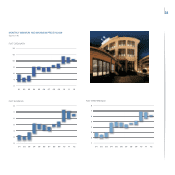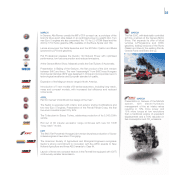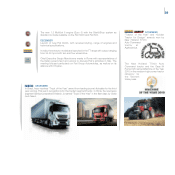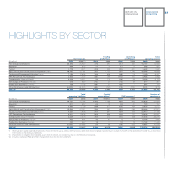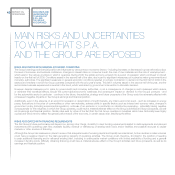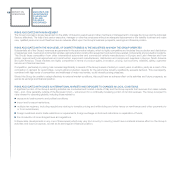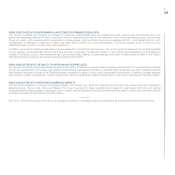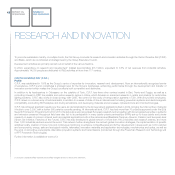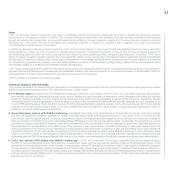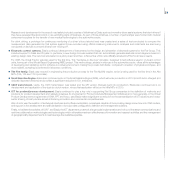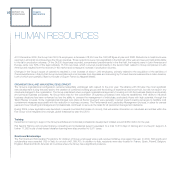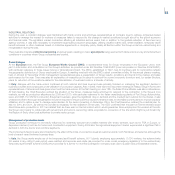Chrysler 2009 Annual Report Download - page 44
Download and view the complete annual report
Please find page 44 of the 2009 Chrysler annual report below. You can navigate through the pages in the report by either clicking on the pages listed below, or by using the keyword search tool below to find specific information within the annual report.
43
RISKS ASSOCIATED WITH THE GROUP’S CREDIT RATINGS
The ability to access the capital markets or other forms of financing and the related costs are dependent, amongst other things, on the Group’s credit
ratings. Following downgrades by the major rating agencies in the first quarter of 2009, Fiat S.p.A. is currently rated below investment grade with ratings
on its long-term debt of Ba1 (with negative outlook) from Moody’s Investors Service, BB+ (with negative outlook) from Standard & Poor’s Ratings Services
and BB+ (with negative outlook) from Fitch Ratings Ltd. Any further downgrade by rating agencies could limit the Group’s ability to access capital markets
and increase its cost of funding, having an adverse effect on its earnings and financial position.
RISKS ASSOCIATED WITH FLUCTUATIONS IN CURRENCY AND INTEREST RATES
The Fiat Group, which operates in numerous markets worldwide, is naturally exposed to market risks stemming from fluctuations in currency and interest
rates. Its exposure to currency risk is mainly connected to the geographic distribution of its manufacturing and sales activities, which result in cash flows from
its export activities being denominated in currencies different from those connected to its production activities. In particular, the Group’s principal exposure is
to net exports from the euro zone to other currency areas (principally the U.S. dollar and the British pound) and to exports from Poland to the euro zone.
The Fiat Group uses various forms of financing to cover the funding requirements of its industrial activities and financing offered to customers and dealers.
Changes in interest rates can increase or reduce the cost of financing and/or interest margins of the financial services companies.
Consistent with its risk management policies, the Fiat Group seeks to manage risks associated with fluctuations in currency and interest rates through the
use of financial hedging instruments. Despite such hedges being in place, sudden fluctuations in currency or interest rates could have an adverse effect on
the Group’s earnings and financial position.
RISKS ASSOCIATED WITH THE POLICY OF TARGETED INDUSTRIAL ALLIANCES
The Group has several joint ventures and industrial alliances in place for the purpose of optimising its capital commitments, reducing risk and accessing
new markets and it intends to continue seeking opportunities for further such alliances.
In 2009, Fiat signed an agreement with Chrysler Group LLC to create a global strategic alliance, and subsequently launched related operating activities.
Through the agreement, both partners seek to achieve the critical mass necessary to position themselves among the sector’s leading operators at the
global level, expanding geographically and, through the sharing of technology and know-how, offering a full range of products.
At this stage, there can be no assurance that the Group will succeed in establishing or maintaining such industrial alliances or that transactions entered
into will be devoid of industrial, technical, operational, financial, regulatory or political risks. Neither can there be any assurance that such transactions will
produce the synergies, expanded product offering, cost reductions or benefits expected, which could have material adverse consequences on the Group’s
business prospects, earnings and financial position.
RISKS ASSOCIATED WITH RELATIONSHIPS WITH EMPLOYEES AND SUPPLIERS
In many countries where the Group operates, Group employees are protected by various laws and/or collective labour agreements which guarantee them,
through local and national representatives, the right of consultation on specific matters, including downsizing or closure of production units and reductions
in personnel. The laws and/or collective labour agreements applicable to the Group could impair its flexibility in reshaping and/or strategically repositioning
its business activities. Fiat’s ability to reduce personnel or implement other permanent or temporary redundancy measures is subject to government
approvals and the agreement of the labour unions. Industrial action by employees could have an adverse impact on the Group’s business activities.
Furthermore, the Group purchases raw materials and components from a large number of suppliers and relies on services and products provided by
companies outside the Group. Some of these companies are highly unionised. Close collaboration between a manufacturer and its suppliers is common
in the industries in which the Group operates and although this offers economic benefits in terms of cost reduction, it also means that the Group is reliant
on its suppliers and is exposed to the possibility that difficulties, including those of a financial nature, experienced by those suppliers (whether caused by
internal or external factors) could have negative effects on the Group.


